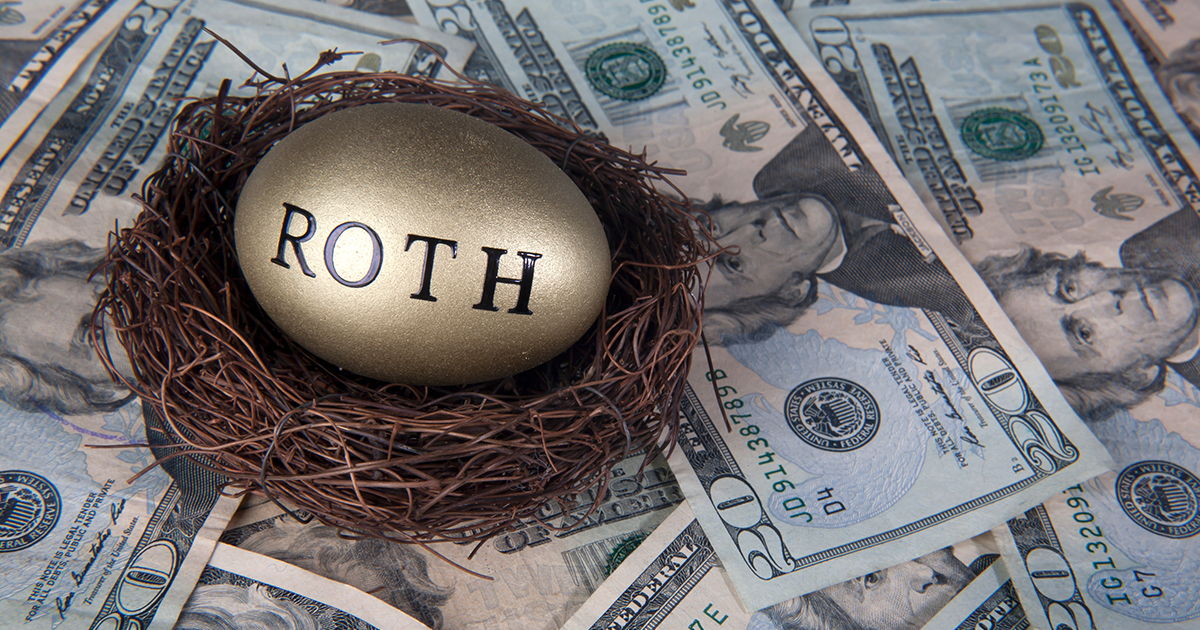
In this world, nothing can be said to be certain; except death and taxes. I’m sure we’ve all heard this wise (and a bit dismal) quote from Ben Franklin before. For one of these certainties, let’s hope we won’t be reminded of its inevitability for a long, long time. But for the latter, its annual reminder quickly approaches. Taxes may be a societal obligation that none of us can avoid, but we aren’t left without financial flexibility in addressing this certainty. One step we can take today to induce more financial freedom in retirement is through contributing to a Roth IRA.
Tax-Free Investing
Contributions to a Roth IRA are made with after-tax dollars, allowing for earnings to be withdrawn tax-free in retirement. Unlike a Traditional IRA, your investments prosper for the course of your lifetime without the burden of your earnings being taxed. To put this into perspective: a 25-year-old maximizing their contribution every year until the age of 72, would realize an estimated $600,000 in additional savings by utilizing a Roth IRA as compared to a Traditional IRA.
Tax-free growth on investment earnings is appealing to all investors, but young investors can exponentially capitalize on the benefits of a Roth IRA. For those in a lower tax bracket than they expect to be in the future, a Roth IRA gives an avenue to take advantage of the lower tax bracket you currently sit in. Not to mention, many economists agree that today’s tax rates are the lowest that they will be for the foreseeable future. If that is the case, then now is the perfect time to capitalize on a Roth IRA.
No RMDs
With a Roth IRA, there are no required minimum distributions (RMDs). When your money gets withdrawn is entirely decided by you. Therefore, a Roth gives you more flexibility in tax planning and potentially more funds to be left to your heirs, if they are unneeded in your lifetime. With a Traditional IRA, a RMD must be withdrawn and taxed each year after reaching the age of 72. These funds might not be necessary for you to withdraw yet and the additional income could prompt an unwarranted bump into a higher tax bracket in retirement.
Limits
While Roth IRAs have a wide range of use cases, not everyone can enjoy their benefits and there are limits to the amount of money that can be contributed. For both Roth and Traditional IRAs, the maximum amount that can be contributed each year is $6,000 (or $7,000 for age 50 and older).
Additionally, individual taxpayers whose 2022 income is over $144,000, or married taxpayers filing joint whose 2022 income is over $214,000; will not be eligible to contribute to a Roth. Single filers between $129,000 and $144,000 and joint filers between $204,000 and $214,000 are eligible for a reduced contribution. For those over the income restriction, there is a common workaround, however; known as a Backdoor Roth. This option works best for those who do not have any assets in a Traditional IRA. A Backdoor Roth entails first making a non-deductible contribution to a Traditional IRA and then immediately converting to a Roth IRA. This can be done by anyone regardless of income.
Find Out More
If you have any questions about starting a Roth IRA and if it’s the right choice for you Submit A Question or Schedule A Meeting to discuss your financial future. The initial consultation is complementary.



